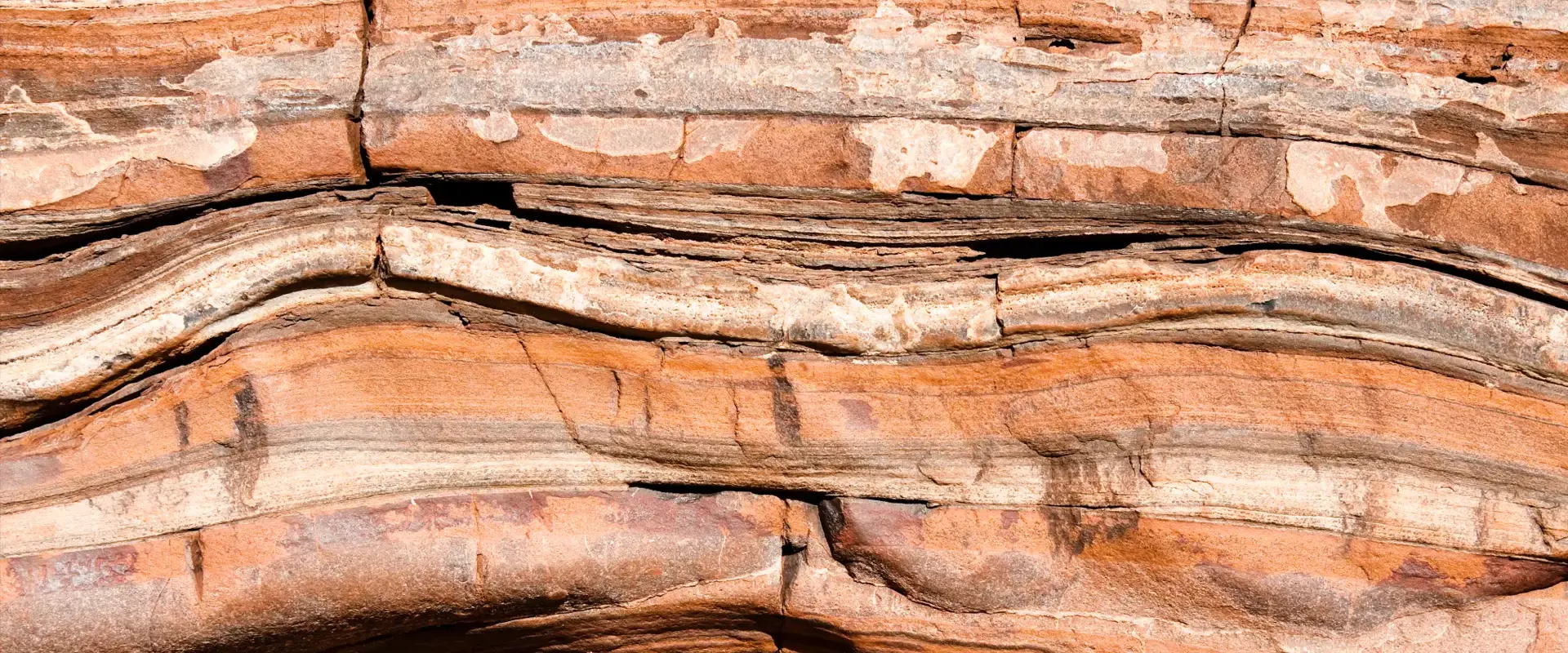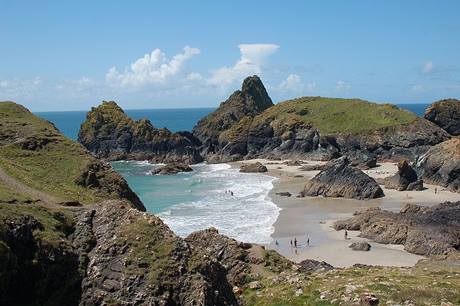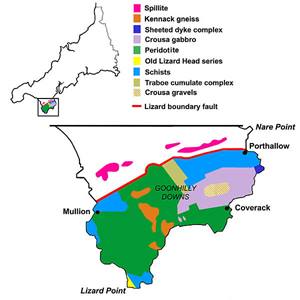
The Lizard, Cornwall

The rocks at the Lizard are part of an ophiolite – a piece of oceanic crust that has been uplifted onto continental crust. When the rocks of the Lizard were formed around 400 million years ago, the area was completely submerged by water. The area of what is now Cornwall was at that time a divergent plate margin and new igneous rocks were being created as two oceanic plates moved apart at a spreading ridge. As the plates moved apart, molten rock rising up from the mantle filled the space created and cooled to form new oceanic floor.
The minerals that form in these rocks are stable below the crust, where pressure and temperature is high and there is no water. Once formed however, these rocks come into contact with water which can cause alteration through a process called hydrothermal metamorphism. At the rocks seen at the Lizard, this alteration created the mineral serpentine which is found in the rock serpentinite.
 |
|
| Geological map of the Lizard Complex: © Andy F |
 |
|
| Serpentinite Boulder, Kynance Cove: © Pierre Terre |
The mineralogy of the Lizard is particularly interesting because, along the coast line, the serpentinite minerals change from their usual green colour to red. This change marks the Mohorovic discontinuity, the boundary between the earth’s crust and the mantle. Getting your hands on the mantle is not easy, generally it is too dense to get itself on top of the continental crust and the presence of the serpentinites may hold the answer. Hydrated mantle is much lower density than non-hydrated mante and so is more easily obducted, leaving the denser mantle behind during the orogeny.
Today, one can walk along the coastline of the Lizard and see the green, snake like bands of wave-polished serpentine and stand at the point of partial melting.
For more information about this site, see our geosites webpage: https://www.geolsoc.org.uk/GeositesKynance
Twinned with: Troodos Ophiolite, Cyprus
The Troodos Mountains on the Mediterranean island of Cyprus are part of an ophiolite complex; an ophiolite is an uplifted fragment of oceanic crust and the Troodos ophiolite is a bigger version of the one we see at The Lizard in Cornwall. Troodos formed at the bottom of the Tethys Ocean during the Cretaceous around 92 Myrs ago. During the Neogene (20 Myrs ago) the island began to uplift due to fluid-rock reactions deep within mantle rocks; the uplift was uneven and centred...continue reading
Related Links
- Dan McKenzie Archive
- The Rock Cycle
- Plate Tectonics schools website
- Plate Tectonics Glossary
- 100 Great Geosites: Kynance Cove
- Variscan Orogeny
| Back to main stories page > |
Other sites
- Twin: Windward Isles
Cwm Idwal
- Twin: Mount Pinatubo
Sperrin Mountains
- Twin: Sierra Nevada
Southern Uplands
- Twin: Nankai
Ben Arnaboll
- Twin: Glarus Thrust
Outer Isles
- Twin: Tohoku Earthquake
Clogherhead and Shannon
- Twin: Papua New Guinea
Cairngorms
- Twin: New Hampshire Granites
Great Glen Fault
- Twin: North Anatolian Fault
The Lizard
- Twin: Troodos Ophiolite
Yoredales
- Twin: Antarctica
Stanage Edge
- Twin: Ganges Delta
Hartland Quay
- Twin: Zagros Range
Amroth-Saundersfoot-Tenby
- Twin: Salt Range, Pakistan
Vale of Eden
- Twin: East African Rift Valley
Zechstein
- Twin: Sicily
Alderley Edge
- Twin: Navajo Sandstone
Isle of Skye
- Twin: Mount Kilimanjaro
Lulworth Cove
- Twin: Albania
Giant's Causeway
- Twin: Cascade du Ray Pic
